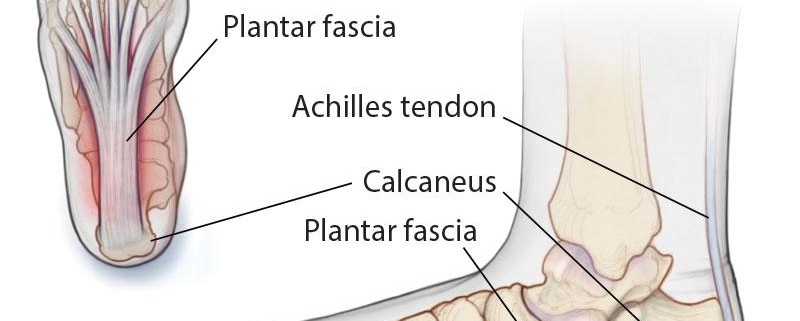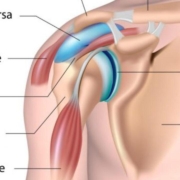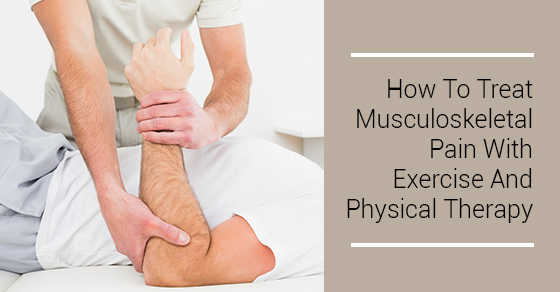Plantar Fasciitis: Solutions for Heel Pain
Heel pain keeping you from your favorite activities? You could be dealing with plantar fasciitis, a common foot problem that affects the thick band of tissue (plantar fascia) running across the bottom of your foot, connecting your heel bone to your toes. This condition can considerably impact your musculoskeletal health, making everyday movements like walking or standing painful and difficult. Understanding plantar fasciitis and taking steps to prevent it can help you stay active and pain-free.
Understanding Plantar Fasciitis
The plantar fascia acts like a shock absorber, supporting the arch of your foot. When this band of tissue becomes inflamed or irritated, it results in the stabbing pain characteristic of plantar fasciitis. This pain is often most intense in the morning or after periods of rest.
Preventing Plantar Fasciitis: Taking Proactive Steps
Preventing plantar fasciitis involves taking care of your feet and making smart choices about footwear and exercise. Here’s what you can do:
1. Choose the Right Shoes:
Proper Arch Support: Shoes with good arch support are crucial. Avoid flat shoes or those with minimal cushioning. Look for shoes specifically designed for arch support or consider using orthotic inserts (arch supports) recommended by a healthcare professional.
Well-Fitting Footwear: Shoes that are too tight or too loose can put extra stress on the plantar fascia. Ensure your shoes fit comfortably and allow your toes to wiggle.
replace Worn-Out Shoes: Over time, shoes lose their support and cushioning. Replace your athletic shoes regularly, especially if you use them for high-impact activities.
2. Stretch regularly:
Calf Stretches: Tight calf muscles can contribute to plantar fasciitis. Regularly stretching your calf muscles can help alleviate tension and improve flexibility in the plantar fascia.
plantar Fascia Stretches: Specific stretches targeting the plantar fascia can help keep it supple and prevent inflammation. One simple stretch involves pulling your toes towards your shin, holding for 30 seconds, and repeating several times. Rolling a tennis ball or frozen water bottle under your foot can also provide relief.
3. Maintain a Healthy Weight:
Reduce Stress on Your Feet: Excess weight puts added stress on your feet, increasing the risk of plantar fasciitis. Maintaining a healthy weight through diet and exercise can significantly reduce this stress.
4. Choose Low-Impact Activities:
Protect Your Feet: High-impact activities like running and jumping can put a lot of strain on the plantar fascia. Consider incorporating low-impact exercises like swimming, cycling, or walking to minimize stress on your feet.
5. Listen to your Body:
Rest and Recovery: If you experience foot pain, rest and avoid activities that aggravate the pain. Ignoring pain can worsen the condition.
Seek Professional Advice: If your pain persists or worsens, consult a healthcare professional or podiatrist. They can provide a proper diagnosis and recommend appropriate treatment options.
6. Warm Up Before Exercise:
prepare Your Muscles: Warming up your muscles before any physical activity, including walking or running, helps prepare your plantar fascia for the stress of exercise.
7. Gradual Increase in Activity:
* Avoid Overexertion: Avoid sudden increases in activity levels.Gradually increase the intensity and duration of your workouts to allow your plantar fascia to adapt.
Key Takeaways for Healthy Feet
Plantar fasciitis can be a painful and debilitating condition, but taking proactive steps can significantly reduce your risk. Remember to choose supportive footwear, stretch regularly, maintain a healthy weight, and listen to your body.By incorporating these simple strategies into your daily routine, you can keep your feet healthy and enjoy pain-free movement.
Additional Resources
For more information on plantar fasciitis and other foot conditions, visit the american Podiatric Medical Association (APMA) website or consult with a healthcare professional. Remember, taking care of your feet is essential for overall musculoskeletal health and well-being.









